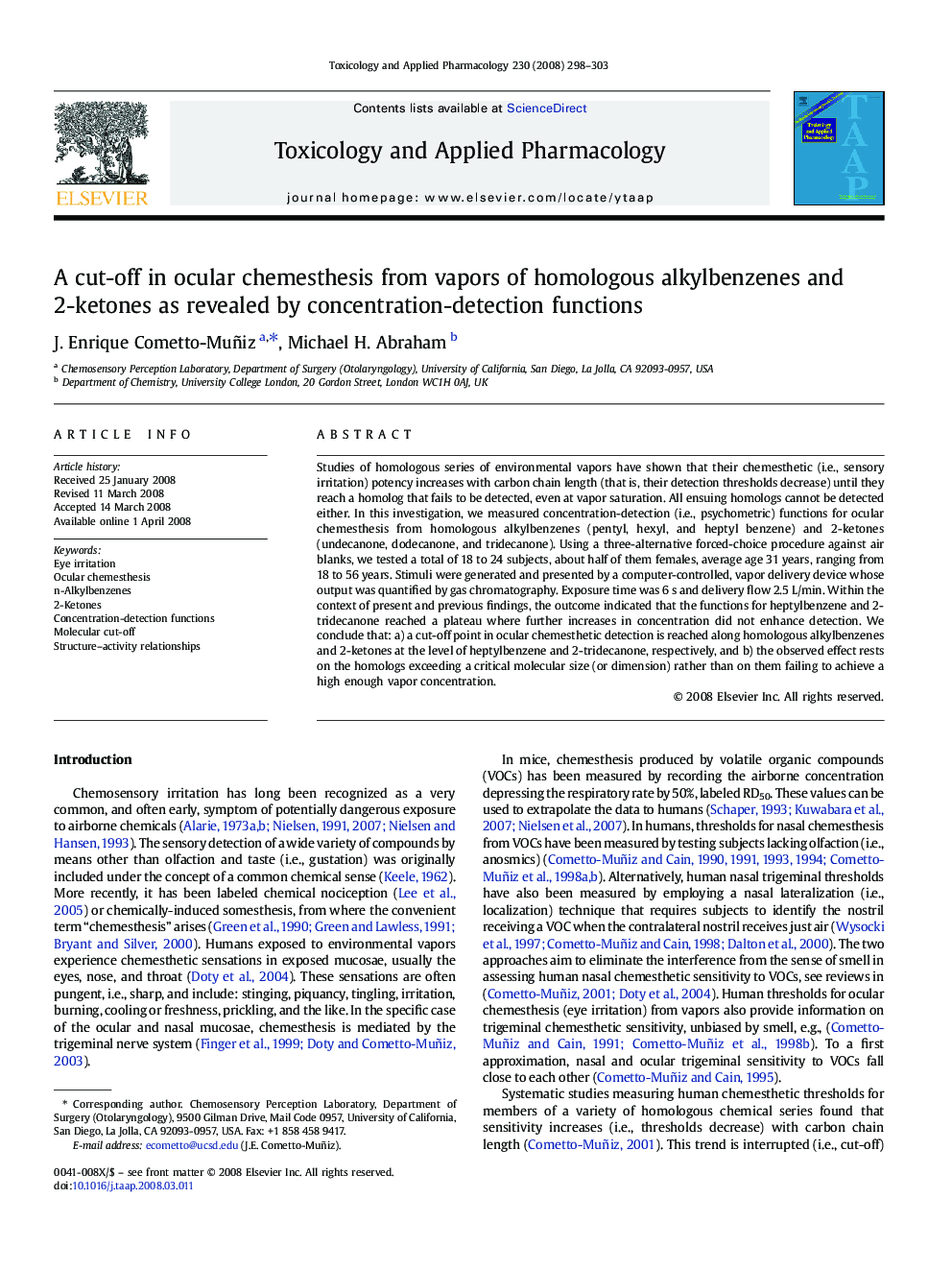| Article ID | Journal | Published Year | Pages | File Type |
|---|---|---|---|---|
| 2571336 | Toxicology and Applied Pharmacology | 2008 | 6 Pages |
Studies of homologous series of environmental vapors have shown that their chemesthetic (i.e., sensory irritation) potency increases with carbon chain length (that is, their detection thresholds decrease) until they reach a homolog that fails to be detected, even at vapor saturation. All ensuing homologs cannot be detected either. In this investigation, we measured concentration-detection (i.e., psychometric) functions for ocular chemesthesis from homologous alkylbenzenes (pentyl, hexyl, and heptyl benzene) and 2-ketones (undecanone, dodecanone, and tridecanone). Using a three-alternative forced-choice procedure against air blanks, we tested a total of 18 to 24 subjects, about half of them females, average age 31 years, ranging from 18 to 56 years. Stimuli were generated and presented by a computer-controlled, vapor delivery device whose output was quantified by gas chromatography. Exposure time was 6 s and delivery flow 2.5 L/min. Within the context of present and previous findings, the outcome indicated that the functions for heptylbenzene and 2-tridecanone reached a plateau where further increases in concentration did not enhance detection. We conclude that: a) a cut-off point in ocular chemesthetic detection is reached along homologous alkylbenzenes and 2-ketones at the level of heptylbenzene and 2-tridecanone, respectively, and b) the observed effect rests on the homologs exceeding a critical molecular size (or dimension) rather than on them failing to achieve a high enough vapor concentration.
